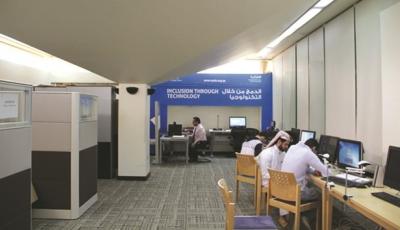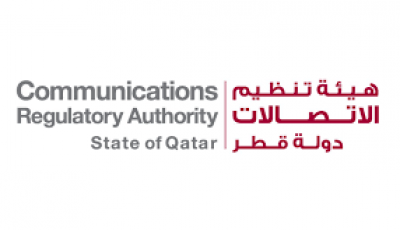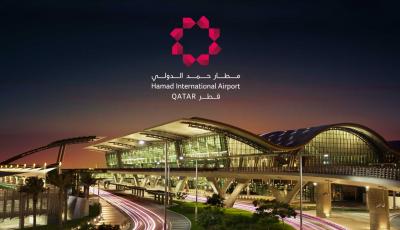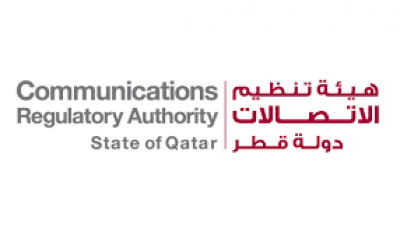Communciations Authority Launches National Frequency Allocation Plan
The Communications Regulatory Authority (CRA) announced today it has finalized the National Frequency Allocation Plan (NFAP) with appropriate consideration to planning of projects in sectors that are critical to Qatar’s economy. The Plan has been endorsed by the Minister of Transport and Communications, and published on the CRA website.President of CRA Mohammed Ali Al-Mannai said "The finalization of NFAP is an important achievement for Qatar’s requirements of spectrum usage in the telecommunication, government, aviation, security, energy, Information & Communications Technology (ICT) and other nationally critically sectors as the management of this scarce recourse impacts the country’s GDP." He addded that the "NFAP includes all current and future needs related to major national and international sport championships, and cultural events." The plan, reviewed by the Qatar National Spectrum Coordination Committee (QNSCC), includes the updated National Frequency Allocation Table (NFAT) and is a comprehensive frequency allocation document that provides a transparent, non-discriminatory and predictable approach to spectrum management and to reserve appropriate spectrum for future innovative technologies.It also integrates planning of new mobile broadband technologies, public protection & disaster relief measures, unmanned aircraft systems, global flight tracking, maritime safety, amateur radio, and other areas of focus at the International Telecommunication Union’s World Radiocommunication Conference (WRC-15).The document is an essential guide for individuals, government agencies, and commercial entities on how radiocommunication services, technologies, and applications are distributed over radio frequency bands in Qatar. It contains important information required for applicants for any request for frequency usage (assignment, licensing, authorization, etc.), before they approach CRA with such requests. Such requests include temporary spectrum assignments regulations for organizing events and their media coverage via satellite, radio and Internet broadcast. The plan also includes list of specific assignments, list of frequency bands for SRD applications, frequency allotment plans relevant to Qatar, International agreements, harmonized frequency bands or spots.The NFAP is subject to periodical revisions in conformity with requirements which are imposed by new national and international regulations referring to allocation of frequency bands. CRA intends to continually engage with relevant bodies to keep this plan updated as per relevant sectors requirements.The Communications Regulatory Authority (CRA) announced today it has finalized the National Frequency Allocation Plan (NFAP) with appropriate consideration to planning of projects in sectors that are critical to Qatar’s economy. The Plan has been endorsed by the Minister of Transport and Communications, and published on the CRA website.President of CRA Mohammed Ali Al-Mannai said "The finalization of NFAP is an important achievement for Qatar’s requirements of spectrum usage in the telecommunication, government, aviation, security, energy, Information & Communications Technology (ICT) and other nationally critically sectors as the management of this scarce recourse impacts the country’s GDP." He addded that the "NFAP includes all current and future needs related to major national and international sport championships, and cultural events." The plan, reviewed by the Qatar National Spectrum Coordination Committee (QNSCC), includes the updated National Frequency Allocation Table (NFAT) and is a comprehensive frequency allocation document that provides a transparent, non-discriminatory and predictable approach to spectrum management and to reserve appropriate spectrum for future innovative technologies.It also integrates planning of new mobile broadband technologies, public protection & disaster relief measures, unmanned aircraft systems, global flight tracking, maritime safety, amateur radio, and other areas of focus at the International Telecommunication Union’s World Radiocommunication Conference (WRC-15).The document is an essential guide for individuals, government agencies, and commercial entities on how radiocommunication services, technologies, and applications are distributed over radio frequency bands in Qatar. It contains important information required for applicants for any request for frequency usage (assignment, licensing, authorization, etc.), before they approach CRA with such requests. Such requests include temporary spectrum assignments regulations for organizing events and their media coverage via satellite, radio and Internet broadcast. The plan also includes list of specific assignments, list of frequency bands for SRD applications, frequency allotment plans relevant to Qatar, International agreements, harmonized frequency bands or spots.The NFAP is subject to periodical revisions in conformity with requirements which are imposed by new national and international regulations referring to allocation of frequency bands. CRA intends to continually engage with relevant bodies to keep this plan updated as per relevant sectors requirements.






